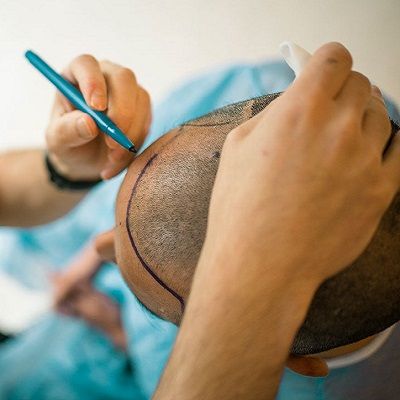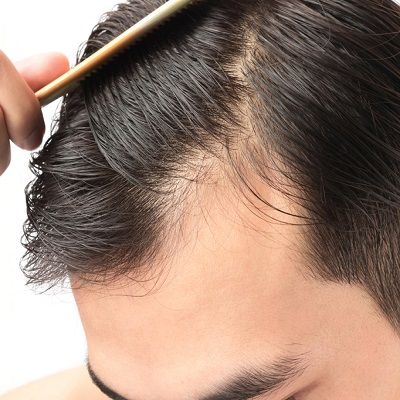
Hair transplantation is an intriguing treatment. We also want to speed up the recuperation time. Many patients want to know how to deal with the after-effects of the treatment. Get extensive instructions on how to care for your scalp. But a hair transplant will help you recover quickly and get natural-looking results. How to Deal with Scabs After a Hair Transplant in Dubai? Scab formation is a normal element of the body’s function. They act as a natural barrier, protecting the skin from open wounds. Especially after a hair restoration surgery involving multiple tiny incisions. These conditions encourage bleeding, which adds to crust formation. Scabs that occur after a hair transplant are natural. And will also go away after a thorough wash.
What Are Scabs After a Hair Transplant?
Scabs are the body’s natural healing response. They develop a protective covering over the graft sites after a Hair Transplant. They are also helping to shelter them from external factors and potential infections. While scabs are a normal part of the healing process. But they must be handled properly to minimize issues.
What Causes Scabs to Form?
Scabs develop because of tiny wounds caused by the Hair Transplant in Dubai operation. These wounds activate the body’s natural healing reaction. So they are resulting in the production of scabs. While scabs are a sign that the body is mending. However inappropriate treatment can result in infections. They can also harm newly transplanted hair follicles.
How to Treat Scabs Following a Hair Transplant:
Despite your desire, you should resist the inclination to pluck or scratch those crusts. You may dislodge the grafts and negatively affect your appearance. It will also need subsequent treatment. Rather than removing the crusts with force, treat them until they fall off on their own. It all comes down to how well you wash your hair. Your surgeon will show you how to wash your hair. They also provide you with a special lotion and shampoo. Apply lotion and shampoo carefully around 2–3 days after the treatment. Then rinse with tiny glasses of warm water. Scabs break off gradually in this manner, enabling your skin to breathe and heal. Now that we know why scabs arise. But let’s look at how to manage them during your recuperation.
Comply with the Post-Operative Hair Transplant Instructions:
Your surgeon will provide you with detailed post-operative care instructions. Following these rules is critical for avoiding difficulties and minimizing scab formation.
Gentle Cleansing:
You must use a moderate to clean your scalp. The expert will also prescribe you pH-balanced shampoo. Scrubbing too hard can dislodge grafts and aggravate scabs.
Maintain Scalp Hydration:
Applicants must use a moisturizing solution or lotion as directed. It will also help to keep your scalp moisturized. Dry, itchy scabs are less likely to form on well-hydrated skin.
Avoid scratching or picking:
Refrain from picking or scratching at the scabs. Since this can also cause infections, scarring, and graft damage. If you are itching, speak with your Hair Surgeon about safe treatment alternatives.
Light Patting:
After showering, instead of rubbing your scalp with a towel, gently pat it dry. This decreases friction and the possibility of upsetting scabs.
Nutritious Diet:
A well-balanced diet high in vitamins and minerals is very important. It can also aid general healing, including scab repair.
Limit your Sun Exposure:
During the healing process, direct sunlight might be detrimental to your scalp. Candidates must wear a helmet or use sunscreen. It will help to protect the transplanted region.
See Your Surgeon:
If you detect any strange symptoms or have any worries about your recovery. You must please contact your surgeon for advice and comfort.
Why is it Critical to Eliminate Scabs Following a Hair Transplant?
Hair transplant scabs grow on the scalp because of scalp injuries. They will be produced by graft extraction and transplanting techniques. Here are some reasons why scabs must be removed following Hair Transplants:
Reduce Itchiness:
Scabs may take a few days to fall off on their own. However, it depends on the incision made during graft extraction. The density and number of grafts placed, and other factors. However, they produce itching. Which may entice the user to pick at the scabs or scratch the region. It is strongly advised against doing so. Because it may cause damage to the new grafts. Scabs can be removed by gently washing the scalp. But in severe cases, a particular process is required. This guarantees that the grafts can breathe normally following the procedure.
Ensure Adequate Graft Growth:
Although it is preferable to allow scabbing during the initial days of transplantation. They will help to anchor the grafts in their place. It should be removed after a few days. Scabs generate a wet and warm environment on the scalp. Because they can also enhance the bacteria growth. This could cause more inflammation and impede the proper growth of the grafts. Washing off the FUE scabs is therefore critical at this stage. Doctors frequently employ an enzyme-rich spray. This will help to remove crusts following a hair transplant.
Prevent Scalp Scarring:
It is really difficult to resist the impulse to scratch the area of the scabs. Scratching or picking at the scabs during the first few days is not safe. It can also cause scarring of the scalp. It is conceivable that the hair grafts are stuck to the scabs early after the operation. Also, scratching them can harm the hair grafts. This must be avoided at all costs until the scabs are gone properly.
Cost of Hair Transplant:
The Cost Of Hair Transplant In Dubai ranges from AED 7,000 to AED 14,000. But you must consult with the expert.
Why Choose Us?
Are you seeking a remedy for hair loss? To cure your hair loss, contact the best of our hair doctors. The Dynamic Aesthetic Clinic In Dubai is the best place for the treatment. Fill out the form below and book a consultation.











